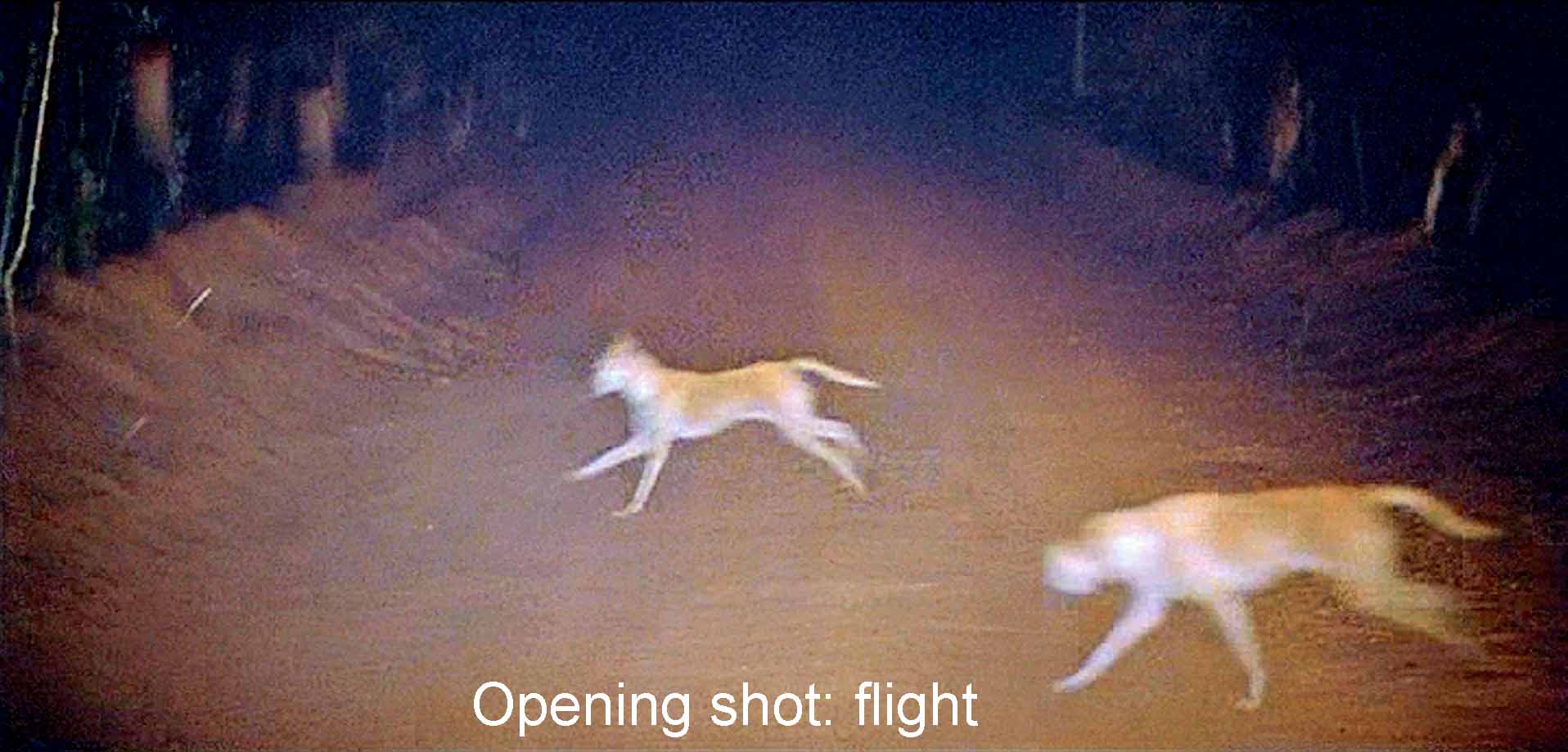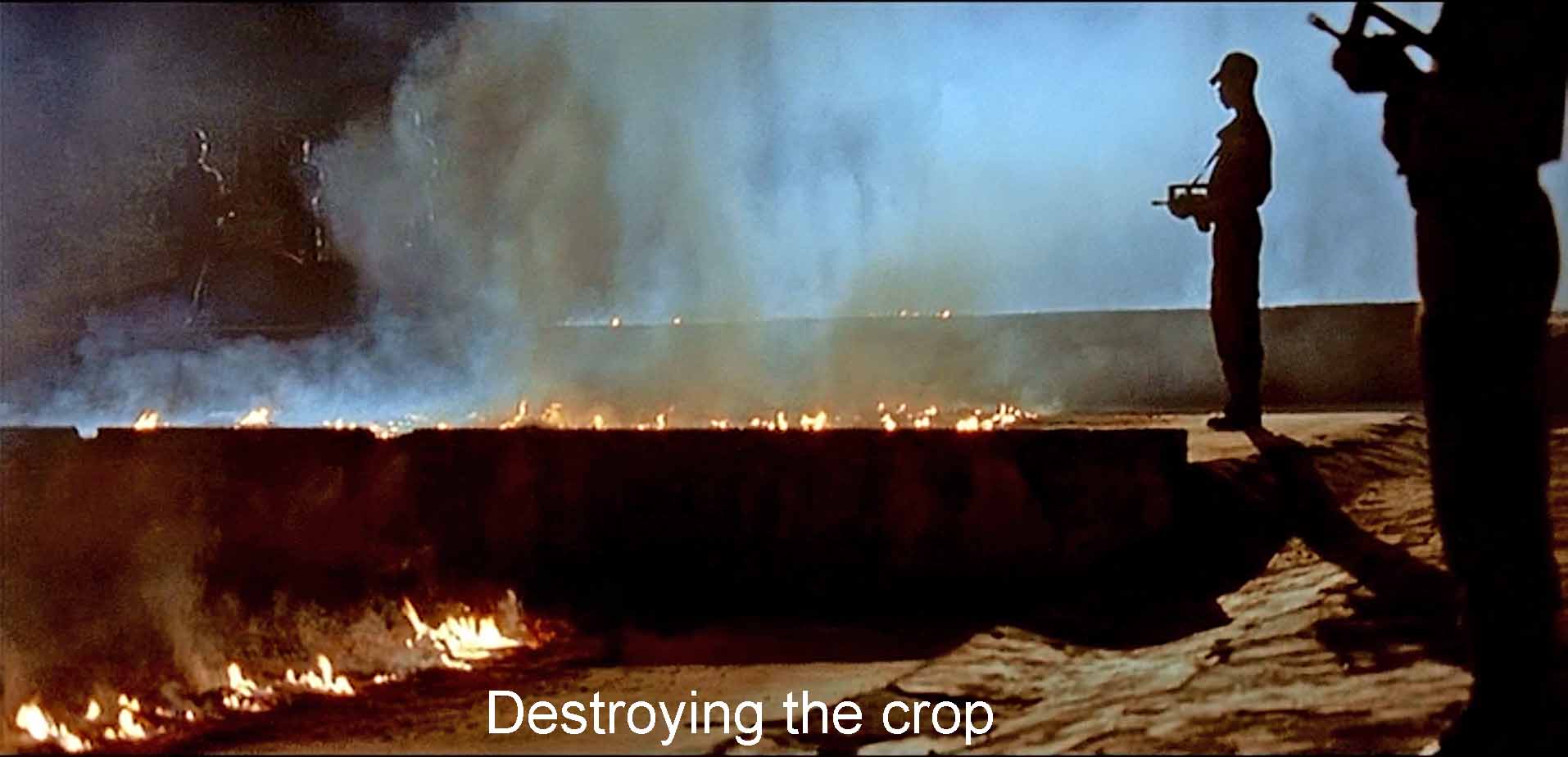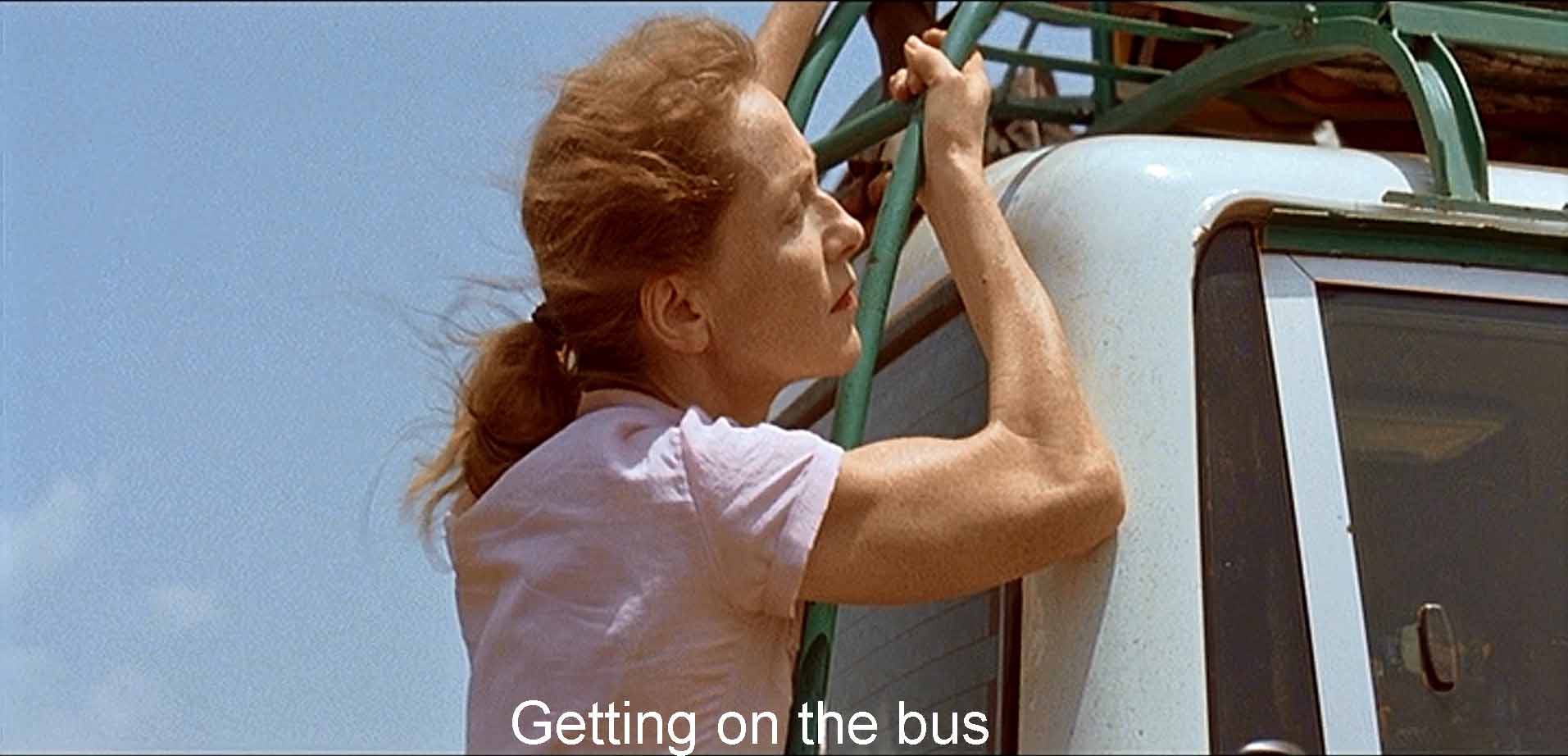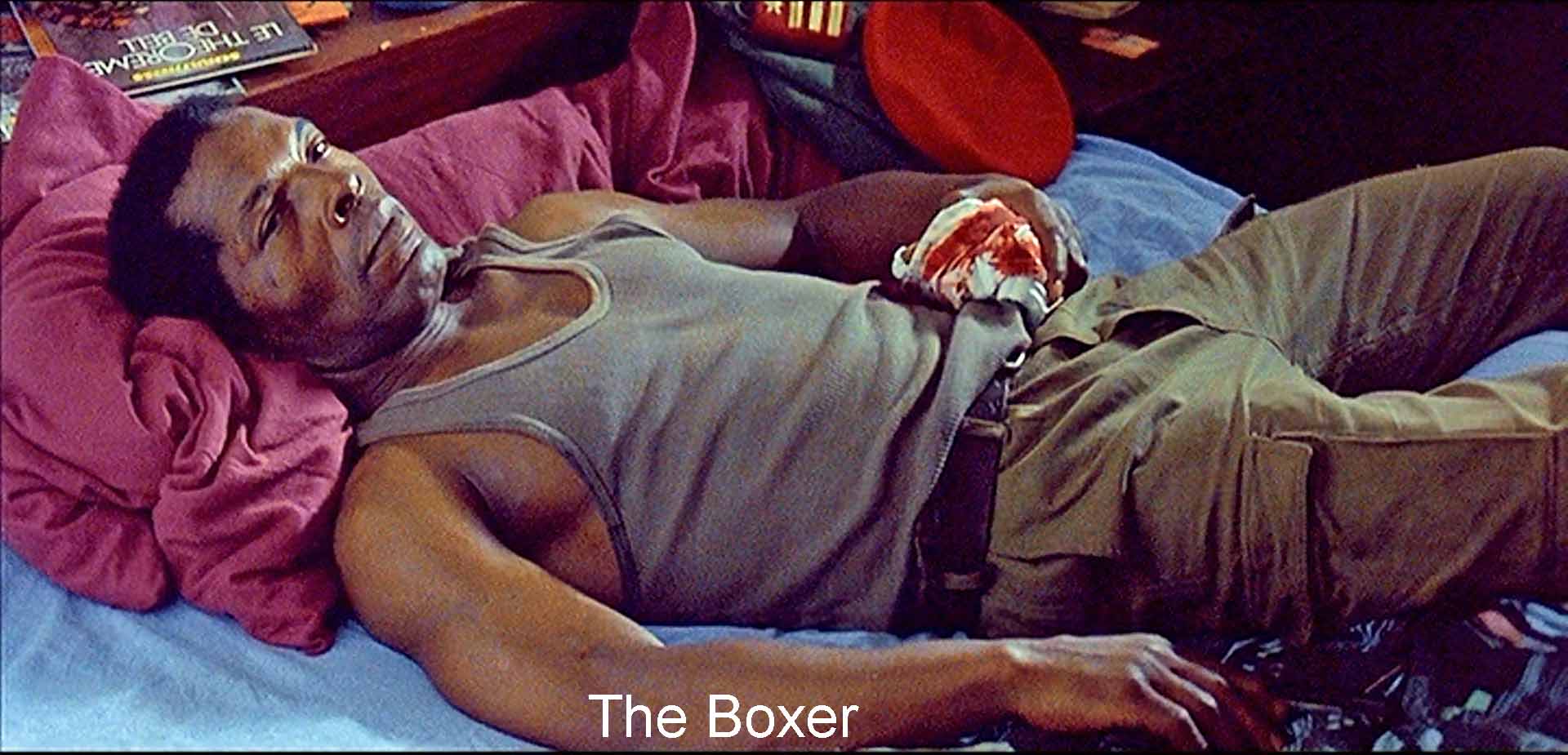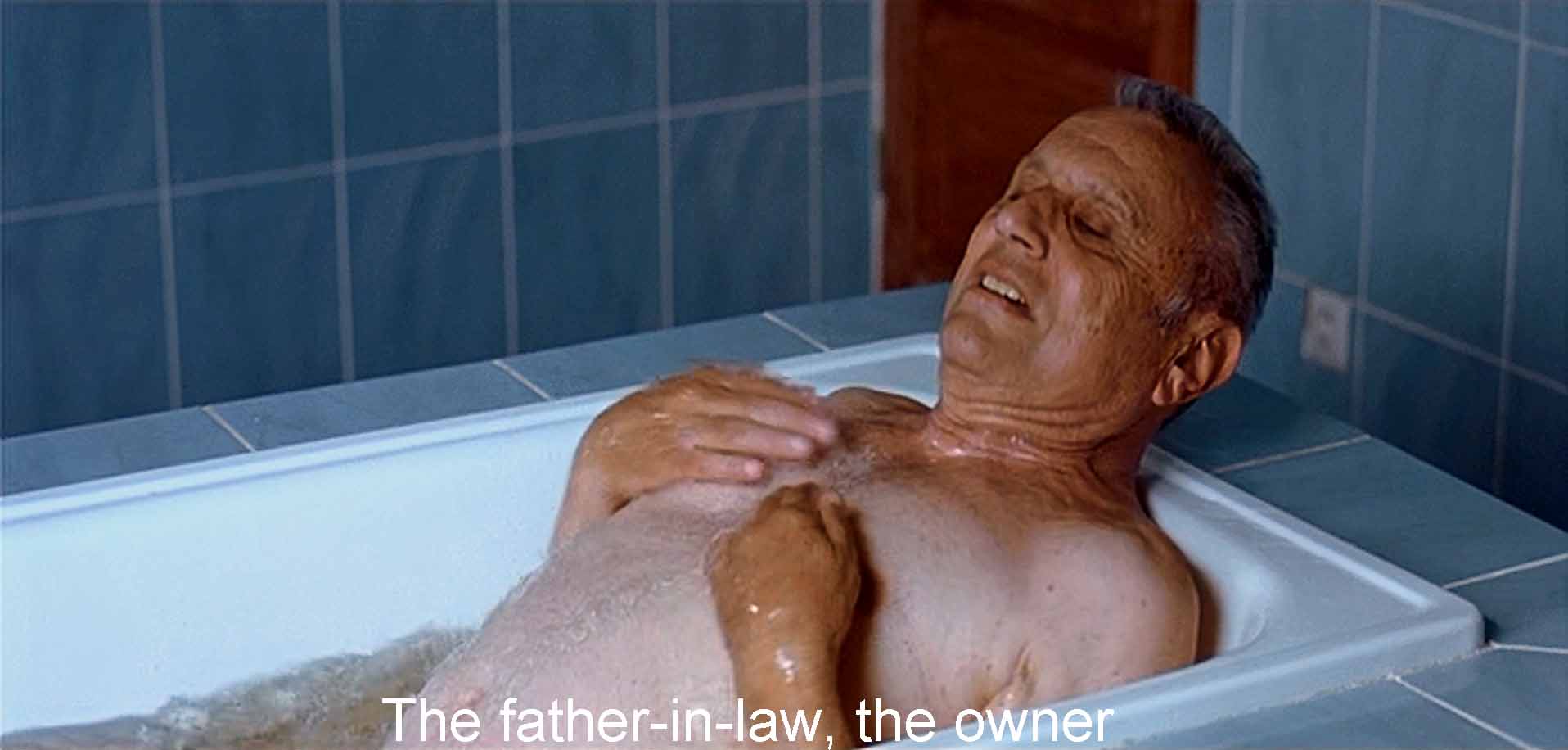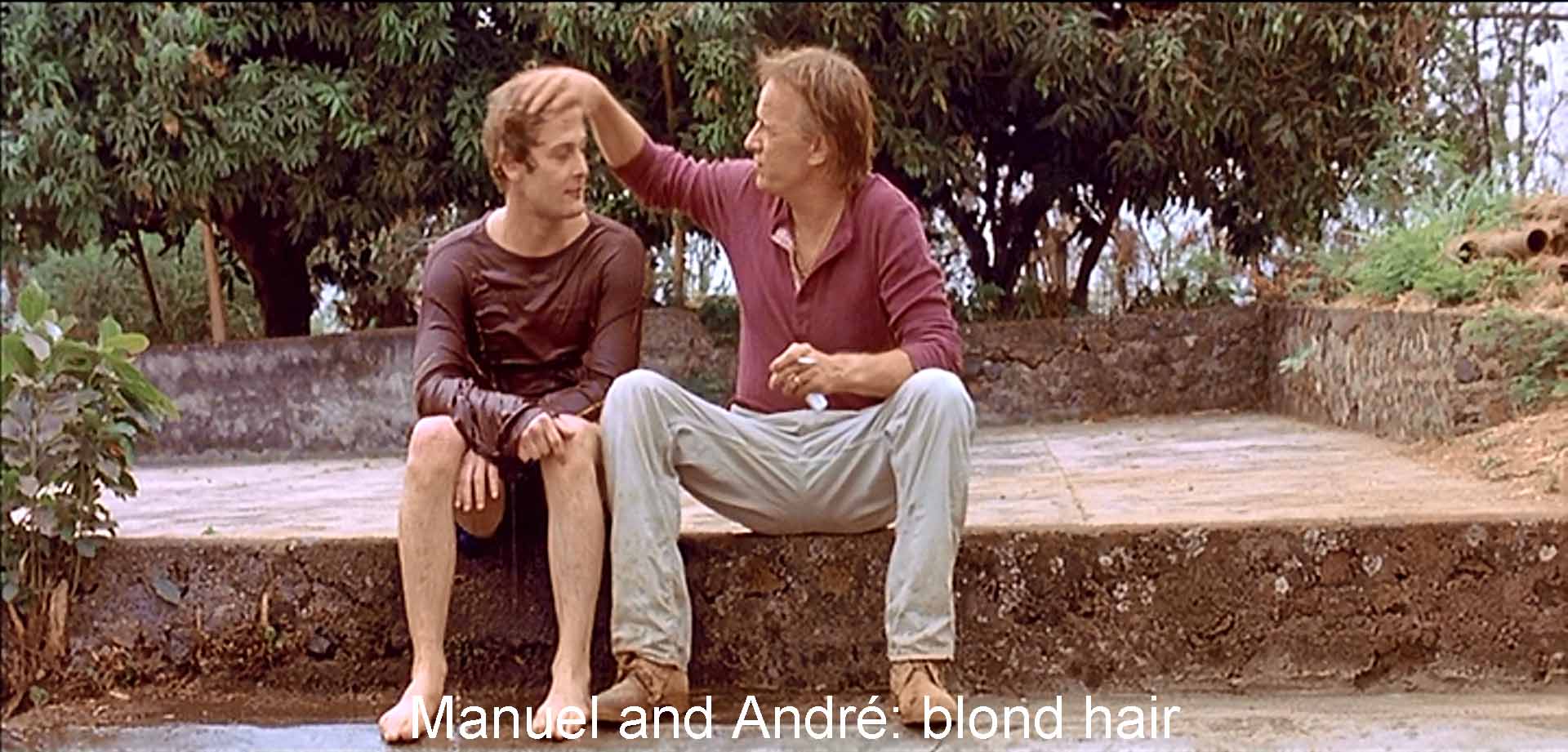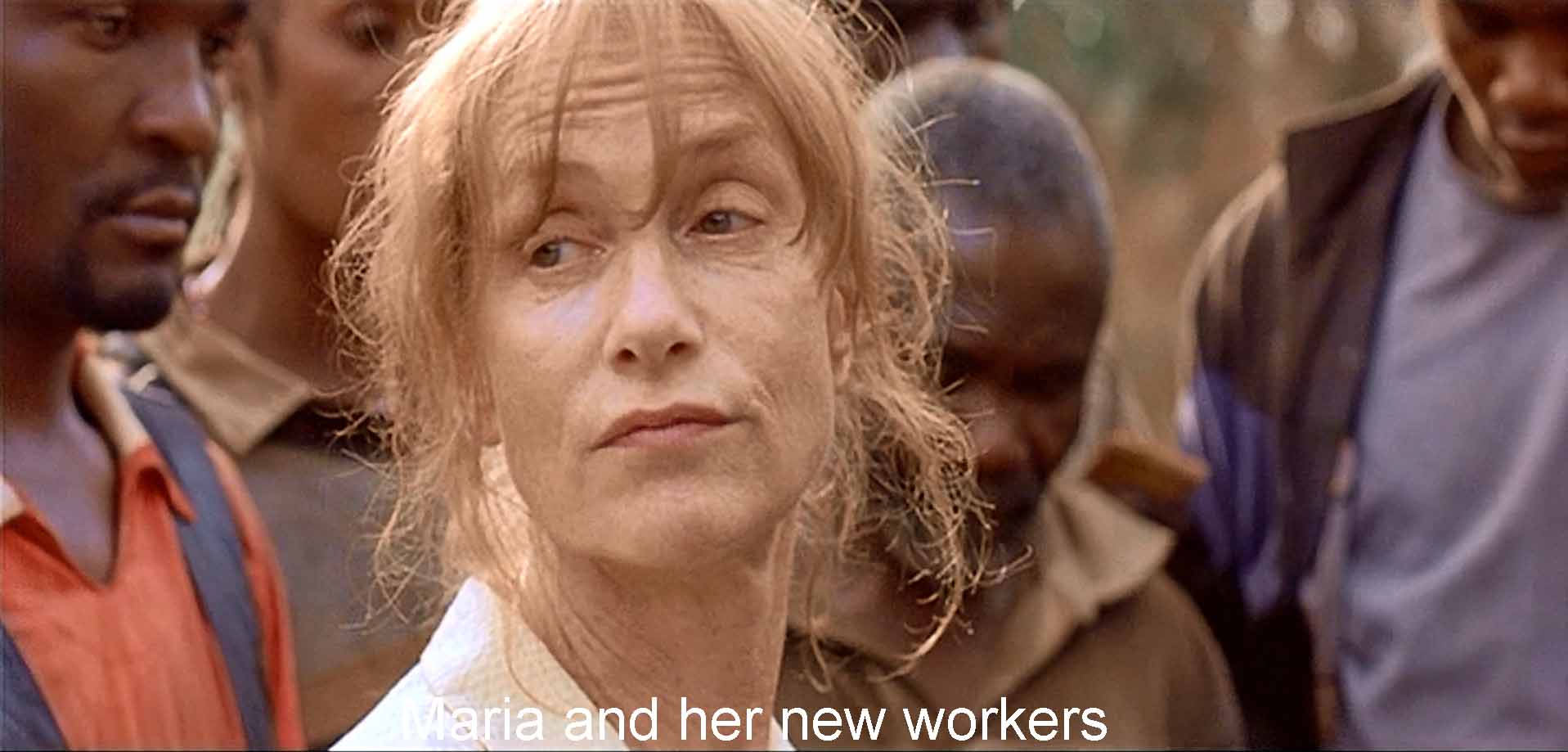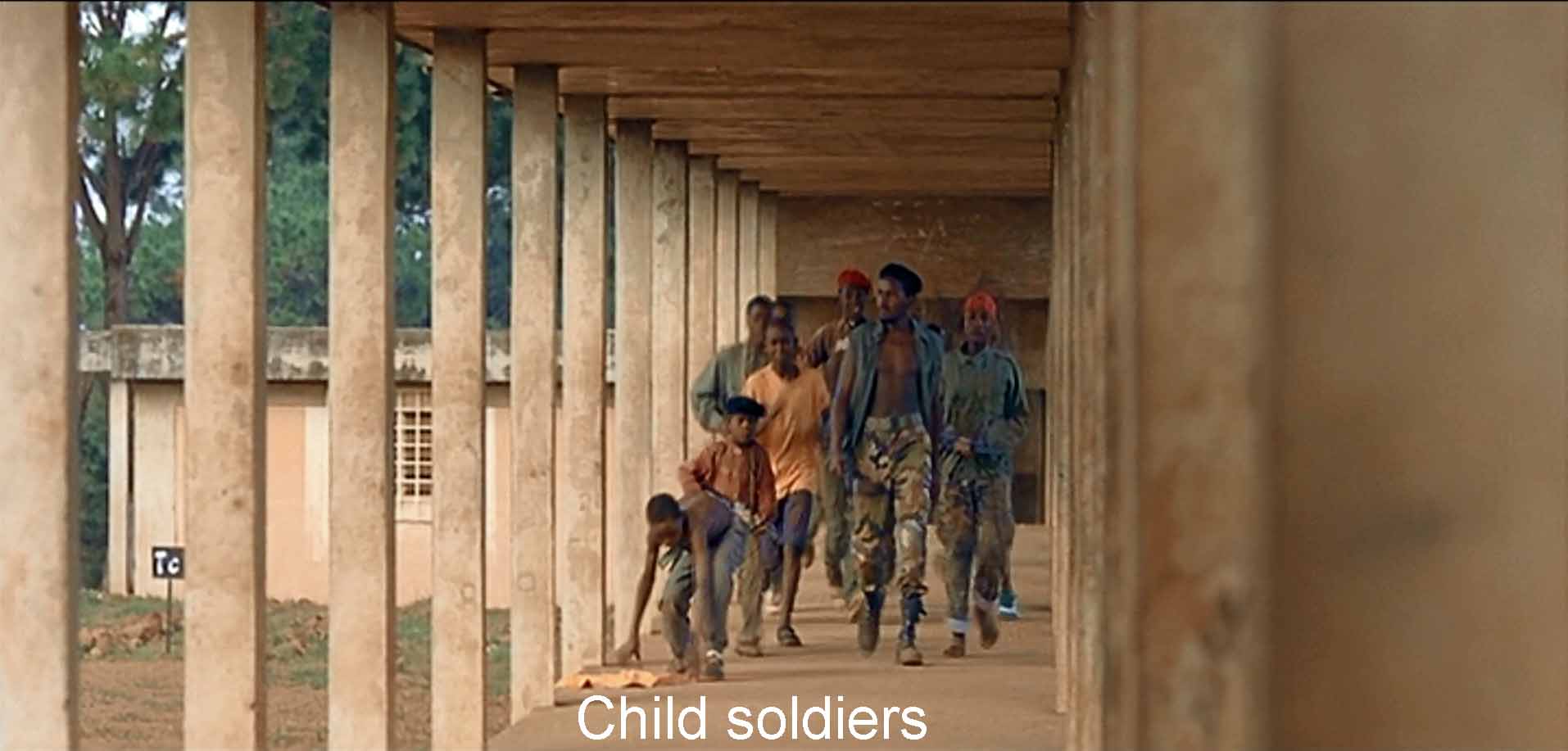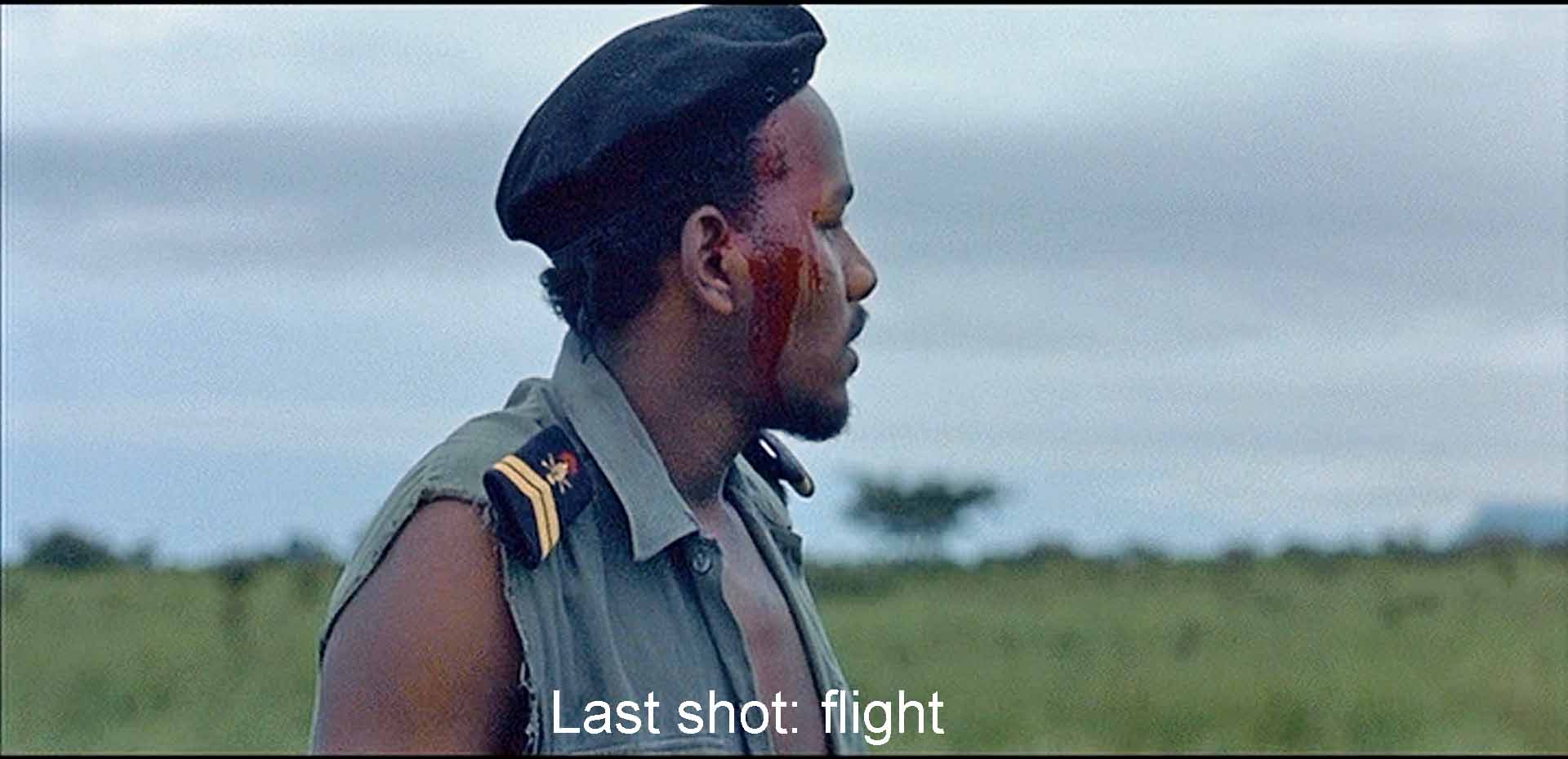In White Material (2009) Claire Denis indulged her penchant for tricky chronology. The opening sequence tucked into the credits consists of: a shot of a pack of hyenas lit by headlights running across a road; the interior of a house with African objets d’art; a dead man of whom a voice says, “It’s the Boxer” and “He’s dead all right.” Then we see soldiers prowling the house, soldiers burning something spread out on the ground (later we will learn this is harvested coffee); a bald man suffocating from the smoke—then finally, the title White Material (no French title for this French movie). All this is the film’s present time, and it is the ending of the film shown at the beginning, before the credits as if to say, This is the start, the given.
Cut to the heroine of the film, Maria Víal, wonderfully strong as played by Isabelle Huppert. She is trying to flag down cars packed with household goods, evidently the cars of les sales blancs, the dirty whites, colonists fleeing this never-named African country. They don’t stop for her. Maria hides from a truckful of soldiers. Finally she flags down a bus.
At first there is no room for her inside the bus. She has to hang onto a ladder on the back. Eventually, soldiers stop the bus, some people get off, and Maria can get inside, but not before a soldier chews her out for having paid off a road block set up by thieving rebels. “Because of people like you this country is filthy.”
Maria on the bus is the frame within which the whole film unfolds in flashback (until we get back to the present in the finale). It’s the same technique Denis used in Beau Travail (1999), where the whole story is told as the main character’s recall while he writes a memoir. Here, Maria sitting in the bus recalls and imagines the story. Where is she going? Apparently to the farm she manages, because in the final scenes of the film she will discover the scenes we have just seen in the opening.
Claire Denis’ theme in all her works is that we do not define ourselves from our psychology, from the inside out. We are defined from the outside in, by our bodies, by our environment, and by the community to which we belong. In that respect this bus is Maria’s community to which she has finally gained entry. But of course it is not really a community.
The country Maria lives in has fractured into a feared and murderous military and a rebellion consisting mostly of child soldiers whose idol and leader is “the Boxer” (Isaach de Bankolé). Neither the government nor the rebels offer a community for her.
Her family on the farm does not cohere into a community, either There is her ex-husband André (Christopher Lambert). But he is now married to a black woman, Lucie (Adèle Ado), and has a mixed-race child, José. Both of them come to identify with the rebels. By André Maria has her teen-age son Manuel (Nicolas Duvauchelle), but he is a heavily-tattooed layabout. The one time he gets out into the land, it cuts his foot. “This land doesn’t like him,” says the mayor Chérif (William Nadylam). Finally, there is André’s father, Maria’s father-in-law (Michel Subor) who is sick and drifts idly around the house. But he is the one who actually owns the plantation to which Maria is so devoted. In the end, he and André betray her by selling it to the mayor.
Maria tries to define herself from inside, by her fierce determination to bring the coffee crop in. Deserted by two different crews, she heroically washes and dries the beans herself. But what defines her is not her project but her body, her white skin and her blond hair. Manuel, too, is defined by blond hair when two marauding children explore his body. “Extreme blondness brings bad luck. It cries out to be pillaged. Blue eyes are troublesome.” So says the mayor Chérif as he strokes Maria’s hair. But Maria’s whiteness does not enter her in the white community of nouveaux-riches settlers either. They won’t stop their cars for her. And of course it does not enter her in the black community, even though she tries to be courteous and friendly to the blacks she meets. Manuel tries to identify with the black child soldiers when he shaves his hair off, but he is of them only as long as they are looting.
Could it be that White Material’s inverted time scheme is Claire Denis’ way of dramatizing Maria’s situation? That she is in the wrong place but, even more important, the wrong time, the time when the native government is driving out the white colonists? Her trip on the bus goes in the wrong direction. She should be fleeing the coffee plantation. Instead she is traveling toward it, toward destruction, death, and murder. Is this dislocation why there is no French title for a French movie?
The final sequence shows one of the child soldiers in a field running away from the plantation, clutching and treasuring the dead Boxer’s red beret. The field is this boy’s country, his environment, and his community. He belongs in a way that Maria never could, for all her efforts. In the end she loses everything, her family such as it is, the coffee crop, and the plantation itself. Her loss is Claire Denis’ gain, for White Material is a strong, beautiful film that, together with Beau Travail, established her as a major 21st-century director.
